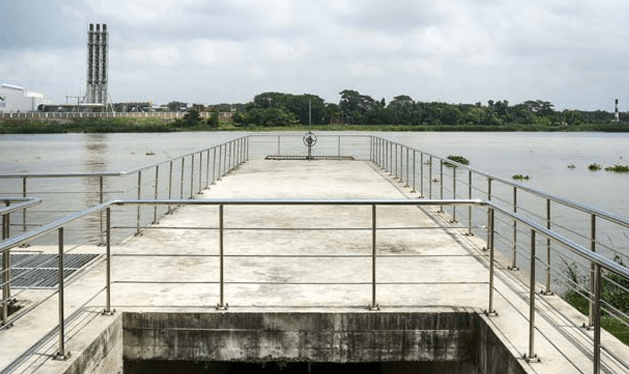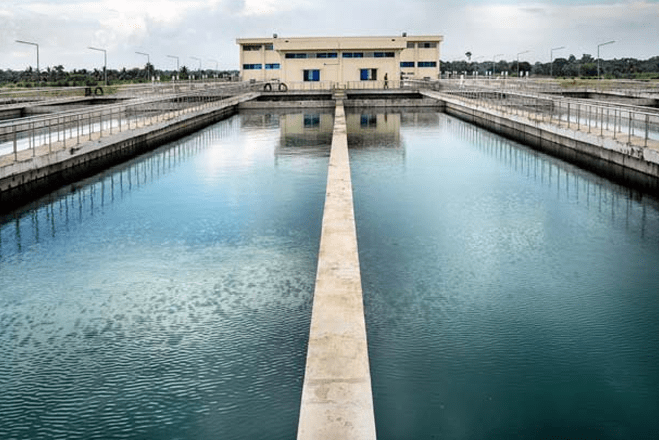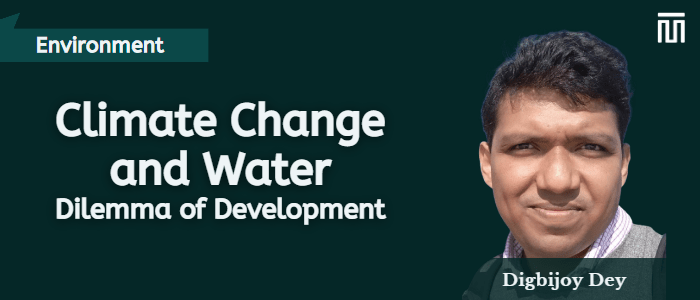Digbijoy Dey –
Climate change is causing many problems. Water problems or better to say, lack of safe water is one of them. Before we blame climate change for the lack of safe water we are facing, let’s just try to understand, what climate change is.
I have asked Google and got many answers. There is a good one I got from World Bank’s Climate Change Knowledge Portal, at least relevant to our discussion. It has started with the definition of climate and then explained climate change. “Climate refers to the long-term regional or global average of temperature, humidity, and rainfall patterns over seasons, years, or decades. While the weather can change in just a few hours, climate changes over longer timeframes. Climate change is the significant variation of average weather conditions becoming, for example, warmer, wetter, or drier—over several decades or longer. It is the longer-term trend that differentiates climate change from natural weather variability.” What is important here is to understand that it is different from natural weather variability.
Let’s try to understand that in a simple way. There is scientific consensus that unmitigated carbon emissions will lead to global warming of at least several degrees Celsius by 2100, resulting in high impacts of local, regional, and global risks to public health and the environment. Global climate change has already resulted in a wide range of impacts across every region of the earth as well as many economic sectors. It is seen that the frequency and intensity of extreme heat and heavy precipitation events are increasing in every part of the world. Bangladesh is an ideal example of it. In the last few years, the country has experienced several extreme heat periods with repeated exposure to cyclones and heavy rainfall. During the devastating Cyclone Aila in 2009, almost all the freshwater sources in southwest Bangladesh were destroyed. In many places of Khulna, Satkhira, and Bagerhat districts, tube wells don’t work because freshwater aquifers are not available at suitable depths and the surface water is highly saline. The embankments are eroded and groundwater sources are flooded. And we can see the area is under repeated exposure to cyclones and flooding. Before the surface water sources can get back to their previous state, they get inundated again by saltwater from the sea. As a result, people try to get water from the ground. To fill in this vacuum, more saltwater infiltrates into the ground which makes the shallow aquifer salty. This is a vicious cycle and getting worse day by day.
At present there is no good solution for these people. Not just the people of Stakhira, Khulna, and Bagerhat, but districts like Barguna and Patukhali are gradually being affected by climate change. Rainwater harvesting is becoming popular as an alternative source of drinking water but serves mainly during the rainy season. In the dry season, people consume water from different partially effective and partially efficient systems. In some areas, people drink from Pond Sand Filters which is a way of filtering pond water. In some areas, water quality is so worse that they use Reverse Osmosis based water treatment systems. Reverse Osmosis is a costly and energy-heavy technology with a high environmental footprint. And people need to pay high for their drinking water if it comes from Reverse Osmosis.
So far there is no one-shot solution for such a problem. One example can be the new water treatment and supply system of Khulna City. In a recent article published in Alzajeera, Sonia Ahmed and Neema Kudva dissected the system. This water supply system is built to extract water from the Madhumati River in the village of Mollahat, 40 kilometers northeast of Khulna, and bring it to the city. The operational design of the plant is different from conventional desalination plants which discharge a lot of hypersaline water to nature.

In the new system in Khulna, during the rainy season, water would be processed directly by a water treatment plant and then provided to consumers. The system has a high-capacity reservoir. During the dry season, when the salinity of the Madhumati is high, the water would be mixed with low-salt water collected in the reservoir during the rainy season to decrease its salt concentration before being sent to the plant. The construction of the system got completed in 2019.
At present it is benefiting Khulna residents. It increased access to piped water from 23 percent of households to 65 percent. If this is the bright side then Sonia and Neema have revealed the dark side of the system. In their study, they found that the burden of drawing water for the Khulna project has significantly stressed the river Madhumati and communities in its basin area. The availability of water for fishing and rice cultivation in the Mollahat area has decreased due to the uptake of water for supply in Khulna City.

Climate change is complex. Mitigation or adaptation action to climate change is also complex. There is no thumb rule for designing such projects. But it is gradually becoming visible that designing such a project requires a 360-degree vision. Otherwise, while benefitting people, they will continue posing a threat to some people also.
Digbijoy Dey is a water and sanitation specialist currently working in IRCWASH Netherlands



